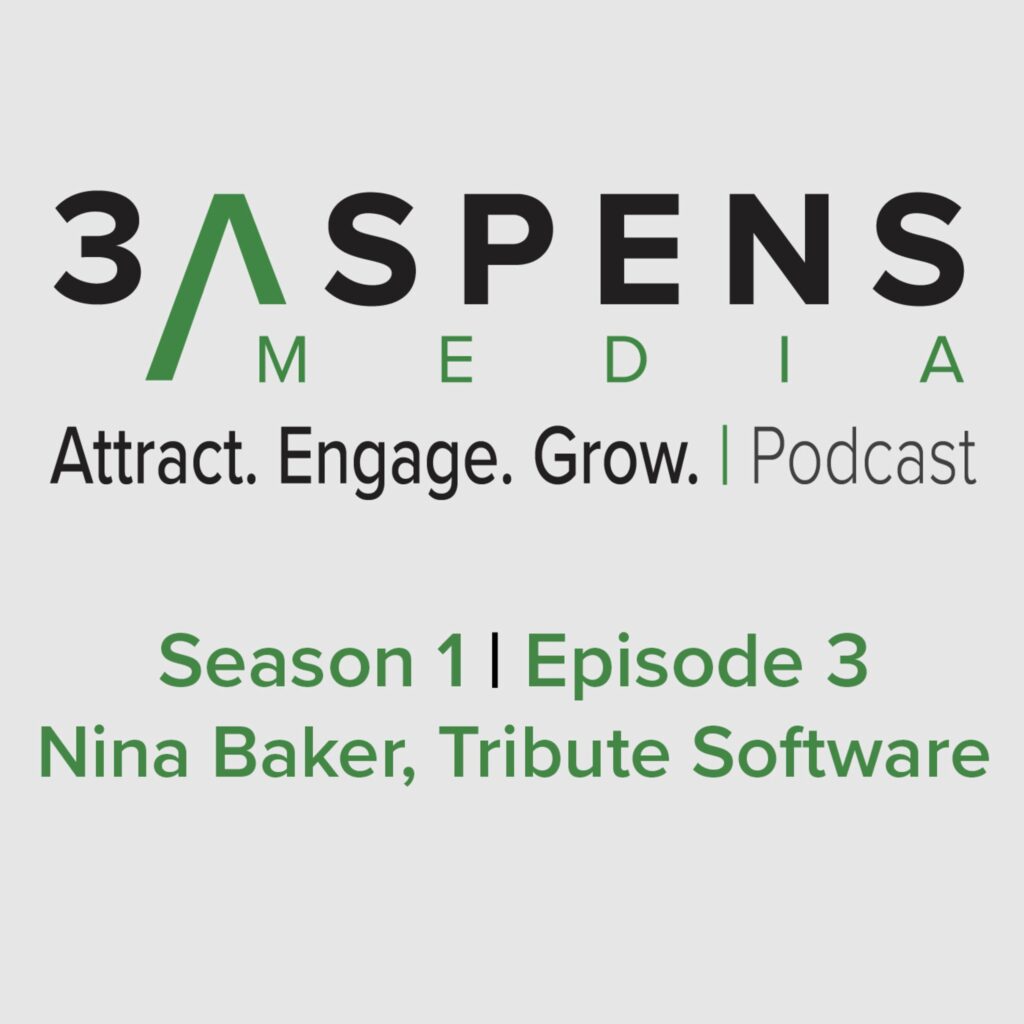Nina Baker is marketing specialist at Tribute Software, a niche ERP provider in the fluid power distribution channel. She does a great job of engaging prospects even when they’re not in a positionto buy or switch suppliers. That’s critical in software, which companies buy infrequently.
Websites/resources mentioned:
3aspensmedia.com
blog.tribute.com
Podcast episode highlights:
How Tribute is in the industry, and not just speaking to it. “One of the things that I thought about was how can I lure people into reading our blog? I had already joined groups that talk about ERP software and whatever else. The one thing I noticed was that people who wrote a lot about ERP software and they made comments, all their competitors would jump on and talk about stuff, but I hardly saw the users or perspective buyers there. So I tried to come around from what my customer’s perspective would be. What are they going to be looking for as far as information out on the web? One of the reasons is they don’t make a purchase of our type of software very often. So if I’m going to be talking about my software all the time they’re not going to look at my site very often because they don’t make that type of decisions every day. It’s not something that they’re looking for information on, maybe once every 8-10 years. I thought let me blog about the stuff that’s important to them and it also helps our customer base because, if they grow, then we as a company grow and become successful. If I blog about industry things, it demonstrates that we are involved in the industry and we have some expertise in the industry. If I’m blogging about subjects that our customers or prospects are drawn to, then they find out about our company because I always put a call to action in at the end of the article. So that draws people to us or makes our company name in their mind as someone who is in the industry and understands the industry.”
Why consistency is everything. “What I would concentrate on is to find someone within your company that is committed to doing it because it does take a lot of time, and to have some writing chops and would post on a regular basis. I mean it’s not going to do any good if you start it up and then have it whither on the vine after a few months. I post twice a week. Every Monday and Thursday, and some people post more, some people post less, but it’s important to just get started and to do it on a regular basis. If they don’t have someone like that at their company, and a lot of our customers don’t, they’re running pretty lean and they already wear several hats as it is. Then I think it’s important to hire somebody to do it, and someone that is going to understand your business and what you want to accomplish with that blog. You know, as you say, content is king now and it’s true now more than ever. I think it’s really important that you get your name out there on a regular basis because web sites are fairly static. They don’t change that often. It’s hard to change them, and a blog is a way for you to constantly putting material out there on the internet and increase the chances of somebody finding you and everyone starts their search online anymore.”
How to measure ROI of a content marketing effort. “I would say it is difficult to measure the ROI. We have had a couple of sales where people have told us, because I always ask ‘how did you find us?’ I’ve had a couple that have said, ‘oh, I found you through your blog. You posted an article about such and such product that I used and through that I found you.’ Another way that I measure ROI is because I do repurpose those blog articles, I put them in newsletters, I put them on LinkedIn, I put them on Facebook, so when I see those clicks, then I can tell whether they’re working or not. People are interested. Especially when I send them out through our email services, because I’ll send out a prospect newsletter once a month and I put those articles in there and then I can monitor that and see exactly how many clicks I get on those and who is clicking on that. If someone is looking at a particular item of interest, I can send them a letter or packet of information because I have that information in my email database of exactly who’s looking at that article.”
Why emails don’t always have to be in the form of a blatant sales pitch. “My philosophy is I want to remind our prospect that we’re out there. Keep us top of mind and I don’t want to insult them or be obnoxious and flood their mailbox with information about our company. I get stuff like that and the first thing I do is block that person because I’m busy, I don’t want to read a bunch of stuff that isn’t pertinent to me and the more pushy you are, the more irritated I get. I try to respect our customer base and our prospect list and just send out information once a month. It’s just a compendium of blog articles that I’ve published in the last month, plus any other information that I might think is useful to them. I try to put in a customer spotlight of ours. Usually once a month and those are always a really popular.”
On choosing the right social media platforms. “Our company doesn’t have accounts with Pinterest or Instagram or Snapchat because basically I don’t have that many hours in a day and the audience I want to reach aren’t there on a professional level, so there’s no point. I found that LinkedIn works really well for the people that I’m trying to reach at my company. So, that’s a challenge. Facebook use is increasing but I don’t use it right now as a huge source of leads but it’s also a way for our company to show a personal side of our company, our staff. Since we are smaller, we like our customers to get to know us and that’s one of the things that we push in our marketing efforts. If you buy software from us, you’ll get to know us, so that’s what we use Facebook for. Talking about our community service projects, that sort of thing.”
The importance of marketing to existing customers. “Part of my marketing efforts also include marketing in house versus prospects. What we do is send out a bi-weekly newsletter to our customers, and it talks about what we’re doing as a company. Things that are coming up; we have an annual users group meeting that’s coming up in June so of course we talk a lot about that. I always include software tips and tricks, so people might open it just for that. We talk about our training classes. We talk about third-party software products and vendors. I always put in links to the latest blog articles, so they’re repurposed yet again. Our most popular segment in that newsletter is, I always do something about customer news.”



